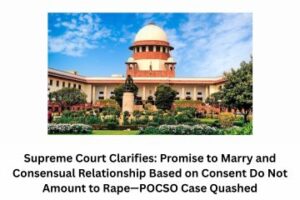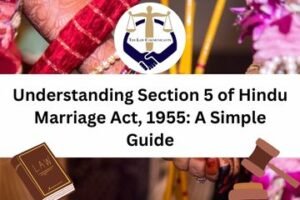Separation of Power
Written By: Pulkit Taneja
Introduction:
The Doctrine of Separation of Powers was first theorized by Montesquieu, who had a firm belief that vesting all the powers of effective governance in a single system would result in tyranny. Montesquieu expressed:
“When the legislative and executive powers are united in the same person or the same body of magistrates, there can be no liberty, because apprehensions may arise, lest the same Monarch or Senate should exact tyrannical laws, to execute them in a tyrannical manner. Again there is no liberty if the judicial power is not separated from the legislative and the executive. Where it joined with the legislative, the life and liberty of the subject would be exposed to arbitrary control; for the judge would be then a legislator.
Where it joined to the executive power, the judge might behave with violence and oppression. 4 There would be an end of everything, where the same man or same body, whether of the Nobles or of the people, to exercise those three powers, that of enacting laws, that of executing the public resolutions and of the causes of individuals.”[1]
This doctrine entails a division of power between the legislature, the Executive, and the Judiciary, each performing separate yet interlinked functions. In India, the legislature in charge of making laws comprises both the houses of Parliament, the Lok Sabha, and the Rajya Sabha. The executive consists of the President and his Council of Ministers, headed by the Prime Minister, who is vested with the duty of enforcing laws. The judiciary is charged with solving disputes arising due to these laws and includes the Supreme Court of India, all other High Courts of various states, and other lower courts. These three organs are also expected to check each other’s workings to create a sense of transparency and accountability.
The Constitutional Debates
The principle of Separation of Powers is hinted at in the Constitution. The Indian Consitution does not have any provisions for an absolute separation of power except in the form of Directive Principles of State Policy (art.50).[2] During the constitutional debates, Mr. K.T Shah had a view to include absolute separation of powers in the Constitution. He believed that there could be a possibility of party influence on the judiciary to interpret laws without complete separation of powers.[3]
However, because the constituent assembly adopted a parliamentarian structure based on the British system of governance, many members opposed the view of an absolute separation of power. Shri K. Hanumanthaiya, who opposed the complete separation of powers, believed that a parliamentarian form of complete government separation would lead to many conflicts between these organs.[4]Therefore, the separation of powers was included as a directive principle.
Checks and Balances:
The Doctrine of Separation of Powers eliminates the possibility of accumulation of power within one government’s organ. Each organ checks the other’s functioning and interjects whenever an unjust or unconstitutional step is taken. For example, the judiciary is mandated to review the legislature’s laws and declare them void if they are unconstitutional. The executive is responsible for the judges’ appointments, and the legislature can remove the judges. Similarly, if the President is to be impeached, the legislature must carry out the proceedings and vice versa.
This system creates a balance of power and avoids organs overpowering others. In a landmark judgment, Kesavananda Bharti v. Union of India,[5] the Supreme Court addressed whether the parliament’s authority to amend the Constitution was unlimited. The Supreme Court declared that the parliament could not under any circumstances damage the Constitution’s basic structure, therefore balancing out the power vested in the parliament. Judicial Review is an essential and integral part of the Constitution. In Delhi Development Authority v. M/s UEE Electricals Engg. Pvt.[6]the supreme court emphasized the meaning and the functions of Judicial Review, stating:
“One can conveniently classify under three heads the grounds on which administrative action is subject to control by judicial review. The first ground is “illegality”, the second “irrationality” and the third “procedural impropriety”.[7]
Similarly, in Ram Prasad v. The State of Bihar[8], the Supreme Court declared the Bihar Sathi Lands (Restoration) Act 1950[9] void based on the equality clause.
Independence of Judiciary:
The Independence of the Judiciary is essential for any democratic government structure to practice the Rule of Law. The citizens might lose hope and confidence in the legislature or the executive but should not lose hope with the judiciary. The judiciary of this country is vested with the responsibility of interpreting the Constitution, reviewing laws, and settling disputes without outside influence. The Independence of Judiciary also forms a part of the Basic Structure Doctrine,[10] and therefore no other organ can interfere or influence its working. There have been many instances where the independence of the judiciary was challenged.
The Allahabad High Court in 1975, in The State of Uttar Pradesh v. Raj Narain,[11] declared the 1971 Lok Sabha elections void due to electoral malpractices and barred Indira Gandhi from contesting elections. The parliament subsequently passed the 39th Constitutional (Amendment) Act, 1971[12] which abolished the judiciary’s jurisdiction concerning all matters of an election. In Indira Gandhi Nehru v. Raj Narain[13], the supreme court struck down this amendment on violating the basic structure. Justice Chandrachud also pointed out that this amendment would violate the separation of power, as the legislature cannot act as the judiciary.
Many discussions have recently taken place regarding giving the judiciary more powers and independence. In All India Judges Association vs Union of India[14], the supreme court raised the retirement age for the judicial officers to 60 years. The Union Government and many other state legislatures filed a review on this judgment claiming that the following matter was under the respective governments’ mandate.
The Supreme Court Dismissed this petition and held: “The mere fact that Article 309 gives power to the executive and the legislature to prescribe the service conditions of the judiciary does not mean that the judiciary should have no say in the matter. It would be against the Constitution’s spirit to deny any role to the judiciary on that behalf for theoretically it would not be impossible for the executive or the legislature to turn and twist the tail of the judiciary by using the said power. Such a consequence would be against one of the seminal mandates of the Constitution, namely, to maintain the independence of the judiciary.”[15]
Conclusion
The Doctrine of Separation of powers is a dynamic concept, different for many countries. The Supreme Court of India’s many bold decisions may seem radical; however, it is essential to eliminate the possibility of an autocracy. We witnessed a minor setback during the emergency, where the executive suspended many judges and dismantled the judiciary.
Today, many jurists have a firm belief that the judiciary must be granted more independence. Considering that Judges’ appointment is still vested in the President’s hands, on the advice of the Chief Justice, the President could be influenced by his council of ministers for any political agenda. The possibility of swaying the judiciary for politics and fulfilling political agendas is nothing but a low blow to our Constitution’s ideals. Nevertheless, all the government organs need to act in cooperation to ensure effective governance of this republic.
Reference:
[1] Thakker. C.K., Administrative Law, (1992), Eastern book Company.
[2] The Constitution of India, 1950, Art. 50.
[3] Constituent assemble debates(proceedings)- volume VII- Friday, 10th Dec, 1948, para 20.
[4] Constituent assemble debates(proceedings)- volume VII- Friday, 10th Dec, 1948.
[5] Kesavananda Bharti v. Union of India AIR 1973 SC 1461.
[6] Delhi Development Authority v. M/s UEE Electricals Engg. Pvt, 2003 (4) SCC 579
[7] Separation of Power.
[8] Ram Prasad v.The State of Bihar, AIR 1953 SC 215.
[9] Bihar Sathi Lands (Restoration) Act 1950.
[10] S.K. Gupta v. President of India, AIR 1982 SC 149.
[11] The State of Uttar Pradesh v. Raj Narain, 1975 AIR 865.
[12] Indira Gandhi Nehru v. Raj Narain ,1975 AIR 1590.
[13] The Constitution (Thirty Ninth Amendment) Act, 1971.
[14]All India Judges Association vs. Union of India, MANU/SCOR/27386/2020
[15]Id.
Previous Posts
Right to form association or unions: Constitutional, legislative and judicial perspective
Right to get water: the recent development and constitutional framework
The International Criminal Court as a Court – An Evaluation
Victims of crime: Restoration and Legal care under Indian Criminal Jurisprudence




